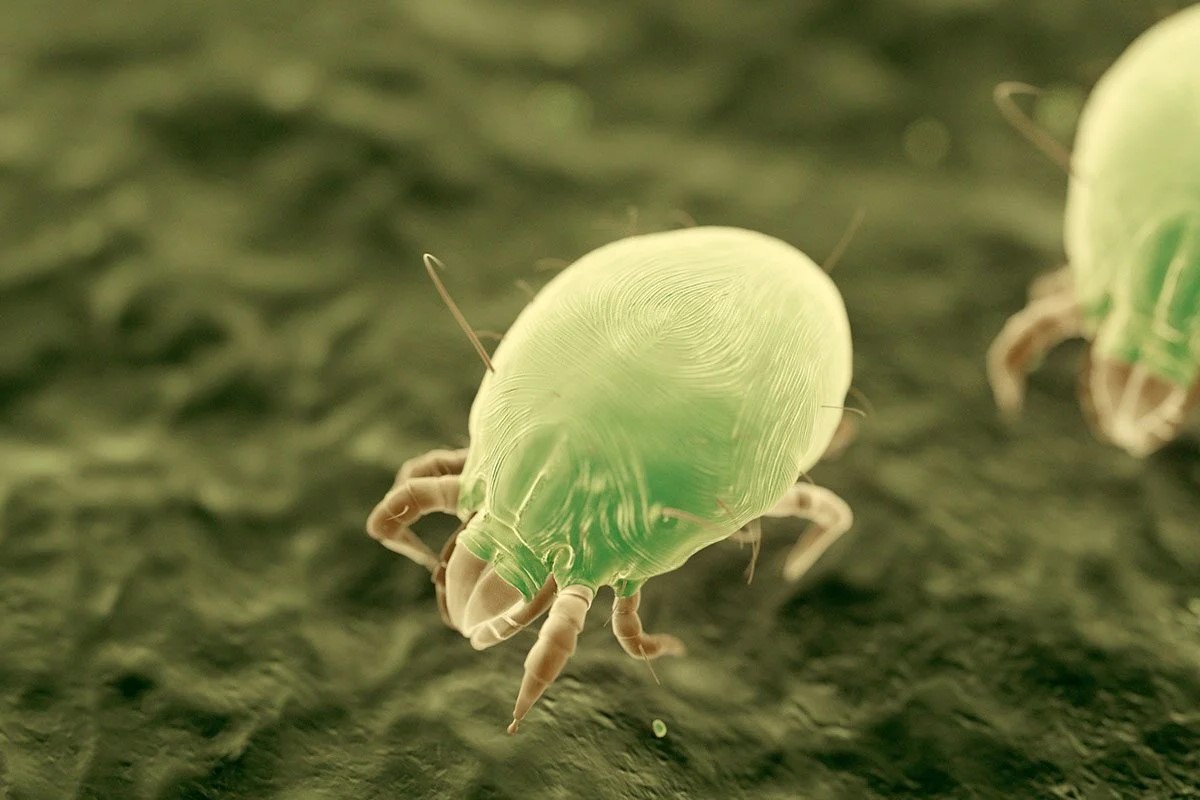
Ever wondered what lurks in your mattress? Dust mites! These tiny creatures, invisible to the naked eye, thrive in our homes, especially in warm, humid environments. They feed on dead skin cells and can cause allergies, making them a common household nuisance. Understanding dust mites can help you manage their presence and reduce allergic reactions. From their life cycle to how they impact our health, there's a lot to learn about these microscopic pests. Ready to dive into some surprising facts about dust mites? Let's uncover the secrets of these unseen invaders and find out how to keep them at bay.
What Are Dust Mites?
Dust mites are tiny creatures that can be found in almost every home. They thrive in warm, humid environments and feed on dead skin cells. Despite their small size, they can cause big problems for people with allergies.
- Dust mites are microscopic, measuring only about 0.2 to 0.3 millimeters in length.
- They belong to the arachnid family, making them relatives of spiders and ticks.
- These tiny creatures have eight legs, just like their spider cousins.
- Dust mites do not bite or sting humans, but their presence can still cause allergic reactions.
Where Do Dust Mites Live?
Dust mites prefer warm, humid environments where they can find plenty of food. They are commonly found in places where people spend a lot of time.
- Dust mites thrive in temperatures between 68°F and 77°F (20°C to 25°C).
- They prefer humidity levels of 70% to 80%.
- Common hiding spots include mattresses, pillows, carpets, and upholstered furniture.
- Dust mites can also be found in curtains, stuffed animals, and even clothing.
What Do Dust Mites Eat?
Dust mites have a very specific diet that allows them to thrive in human environments. Understanding what they eat can help in controlling their population.
- Dust mites primarily feed on dead skin cells shed by humans and pets.
- An average person sheds enough skin cells each day to feed a million dust mites.
- They also consume fungi, pollen, and bacteria found in household dust.
- Dust mites do not drink water; they absorb moisture from the air and their food.
How Do Dust Mites Affect Health?
While dust mites themselves are not harmful, their presence can lead to various health issues, especially for people with allergies or asthma.
- Dust mite droppings contain proteins that can trigger allergic reactions.
- Symptoms of dust mite allergies include sneezing, runny nose, itchy eyes, and coughing.
- Dust mites can exacerbate asthma symptoms, leading to more frequent and severe attacks.
- Long-term exposure to dust mites can lead to chronic respiratory issues.
How to Control Dust Mites?
Controlling dust mites can be challenging, but there are several effective strategies to reduce their population and minimize their impact on health.
- Regularly washing bedding in hot water (at least 130°F or 54°C) can kill dust mites.
- Using allergen-proof mattress and pillow covers can prevent dust mites from settling in.
- Keeping indoor humidity levels below 50% can make the environment less hospitable for dust mites.
- Vacuuming carpets and upholstered furniture with a HEPA filter can help remove dust mites and their droppings.
Dust Mites: Tiny Yet Mighty
Dust mites, though tiny, play a significant role in our daily lives. These microscopic creatures thrive in warm, humid environments, feeding on dead skin cells. They can trigger allergies and asthma, making it essential to keep them under control. Regular cleaning, using allergen-proof covers, and maintaining low humidity levels can help reduce their presence. Understanding dust mites helps us take proactive steps to minimize their impact on our health. While they might be invisible to the naked eye, their effects are very real. By staying informed and taking preventive measures, we can create a healthier living space. Remember, a little effort goes a long way in keeping these tiny invaders at bay. Stay vigilant, keep your home clean, and breathe easier knowing you've got dust mites under control.
Was this page helpful?
Our commitment to delivering trustworthy and engaging content is at the heart of what we do. Each fact on our site is contributed by real users like you, bringing a wealth of diverse insights and information. To ensure the highest standards of accuracy and reliability, our dedicated editors meticulously review each submission. This process guarantees that the facts we share are not only fascinating but also credible. Trust in our commitment to quality and authenticity as you explore and learn with us.


